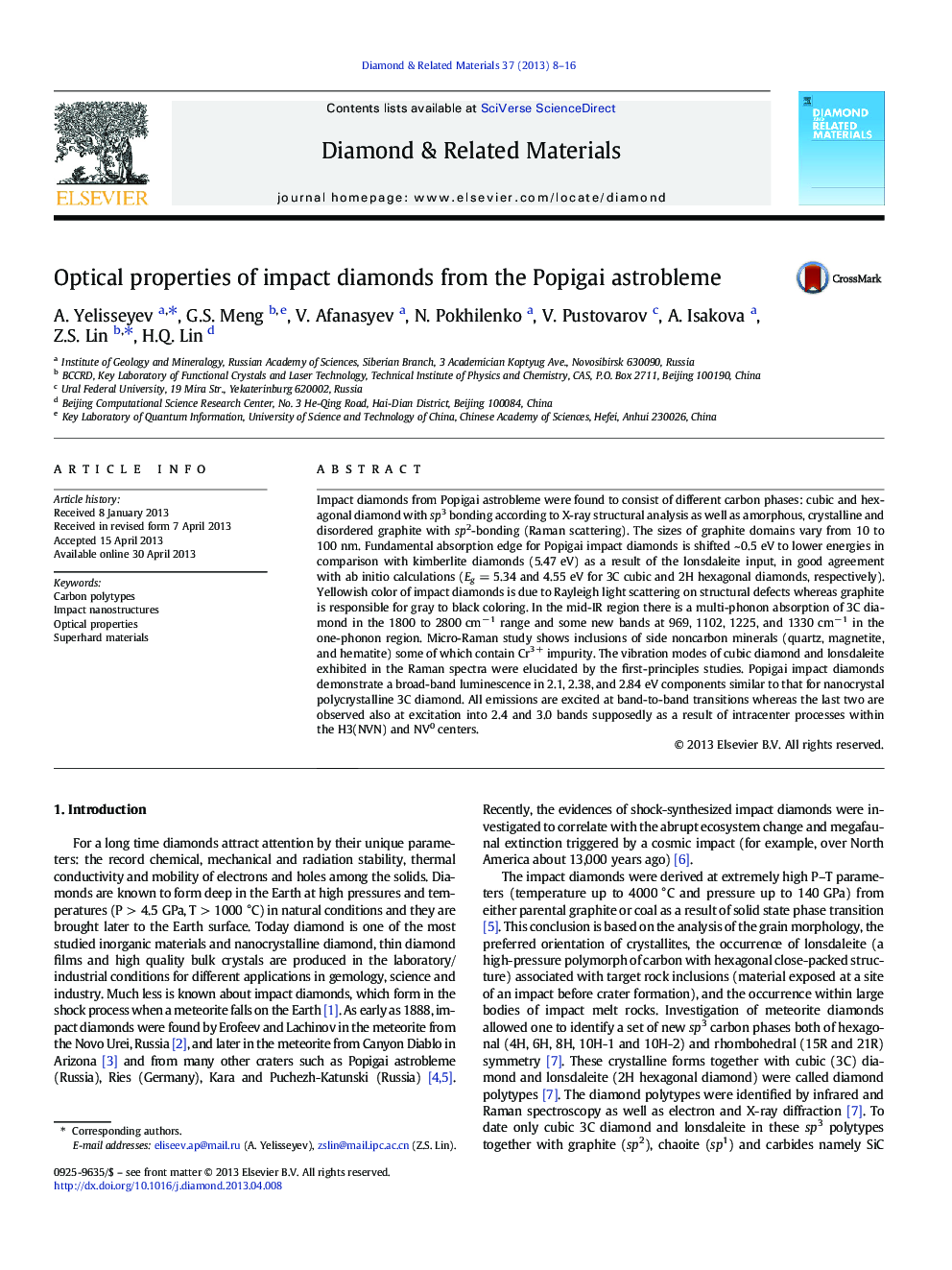| کد مقاله | کد نشریه | سال انتشار | مقاله انگلیسی | نسخه تمام متن |
|---|---|---|---|---|
| 700733 | 1460794 | 2013 | 9 صفحه PDF | دانلود رایگان |

• Numerous impact diamonds were selected from the Popigai astrobleme in Russia.
• The transmission and absorption for these samples are measured.
• The Raman and photoluminescence spectra for the impact diamonds are measured.
• The electronic and phononic mechanisms for the optical properties are elucidated.
Impact diamonds from Popigai astrobleme were found to consist of different carbon phases: cubic and hexagonal diamond with sp3 bonding according to X-ray structural analysis as well as amorphous, crystalline and disordered graphite with sp2-bonding (Raman scattering). The sizes of graphite domains vary from 10 to 100 nm. Fundamental absorption edge for Popigai impact diamonds is shifted ~ 0.5 eV to lower energies in comparison with kimberlite diamonds (5.47 eV) as a result of the lonsdaleite input, in good agreement with ab initio calculations (Eg = 5.34 and 4.55 eV for 3C cubic and 2H hexagonal diamonds, respectively). Yellowish color of impact diamonds is due to Rayleigh light scattering on structural defects whereas graphite is responsible for gray to black coloring. In the mid-IR region there is a multi-phonon absorption of 3C diamond in the 1800 to 2800 cm− 1 range and some new bands at 969, 1102, 1225, and 1330 cm− 1 in the one-phonon region. Micro-Raman study shows inclusions of side noncarbon minerals (quartz, magnetite, and hematite) some of which contain Cr3 + impurity. The vibration modes of cubic diamond and lonsdaleite exhibited in the Raman spectra were elucidated by the first-principles studies. Popigai impact diamonds demonstrate a broad-band luminescence in 2.1, 2.38, and 2.84 eV components similar to that for nanocrystal polycrystalline 3C diamond. All emissions are excited at band-to-band transitions whereas the last two are observed also at excitation into 2.4 and 3.0 bands supposedly as a result of intracenter processes within the H3(NVN) and NV0 centers.
Journal: Diamond and Related Materials - Volume 37, August 2013, Pages 8–16